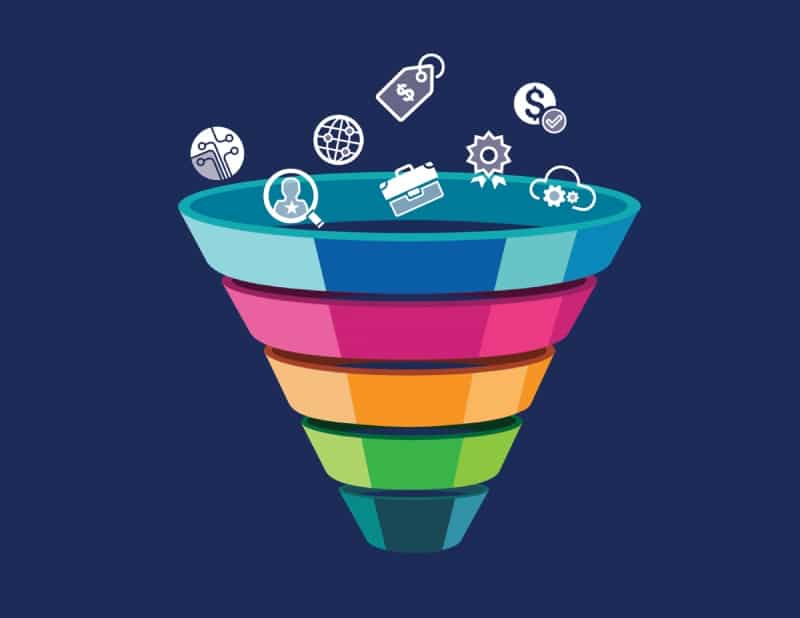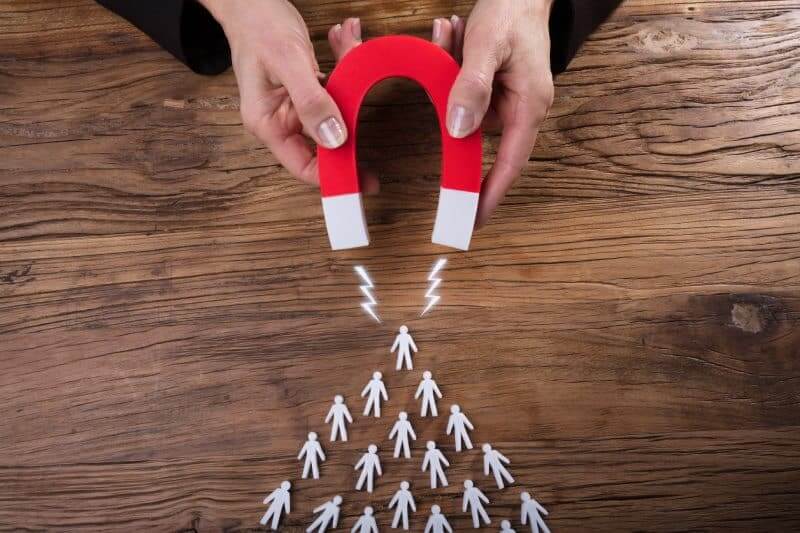Want to better understand the B2B sales funnel? Our in-depth guide is going to show you the intricacies of the B2B sales funnel and help you set up processes to generate qualified leads and turn them into customers.
Let’s take a close look at the B2B sales funnel.
Why It’s Important to Understand the B2B Sales Funnel
It’s important to understand the BB2 sales funnel because it serves as a blueprint for how you attract and convert customers. The sales funnel for B2B marketing is also slightly different from the B2C one, which means you might have to make changes to how you do sales.
If you have a clearly defined sales funnel, then it’s going to help you to:
- Better identify your target audience
- Improve sales processes
- Improve the customer experience
- Convert more customers
Those are some pretty awesome benefits, so it’s well worth understanding the different B2B sales funnel stages.
So, let’s take a look at the sales funnel in more detail, and we will show you some B2B sales funnel examples to help you get a better understanding of what might work for your business.
What are the Stages of a B2B Sales Funnel?

Sales funnels should be tailored to the needs of each individual business, but they tend to be broken down into stages that every funnel will share.
In the case of B2B sales funnels, there are six stages (as opposed to the four stages in the B2C sales funnel). We’ve broken down the B2B sales funnel into its component parts to look at each one in more detail.
Stage 1: Awareness
Let’s start at the top of the funnel with the awareness stage.
This is where potential customers identify a need or a problem that needs solving (a pain point). For example, they might decide that they’re not getting enough traffic to their landing pages.
So, what do people (and remember, businesses are made up of people) do when they have a question? More often than not, they turn to Google.
In this case, they might search for “how to boost organic traffic.”
They will be presented with a list of results that are dominated by two key marketing strategies that dominate the awareness stage: content marketing and paid ads.
At this point, the focus on the content is more informational, helping to educate the reader about the problem. Blog posts should help give the reader practical tips and pointers to help them decide what action to take.
By giving the reader helpful information, you’re also positioning your product or service as the answer to their problem, while positioning your brand as a helpful and trustworthy partner.
Stage 2: Interest
Once you reach stage two in the B2B sales funnel, you’ve grabbed the potential customer’s attention. You’ve positioned your brand as an authoritative source that can help people solve their problems.
This is a good first step, but you’re still far from convincing people that they should invest in your products and services.
At this point, B2B buyers will continue to research their problem, but they’ll also spend more time researching your brand and services. They will interact more with your product pages, read reviews, and check out case studies to find out more about how your business functions.
If people like what they see, then they’ll take the next steps to become a lead. This might mean picking up the phone to speak to your sales team or simply filling out a contact form.
Buyers aren’t looking to make a purchasing decision here, but they’re expressing their interest in finding out more about your services.
Stage 3: Consideration
You may have been reading along thinking “well, this is exactly the same as the B2C sales funnel.” However, stage three of the B2B sales funnel is where we start to see some differences.
One of the key differences with the B2B sales funnel is that there are generally multiple stakeholders. Often, the people doing the research aren’t even the decision-makers.
This means that once the initial research has been performed, and the buyer has made first contact, then there’s a consideration stage. This can be one of the most frustrating stages of the sales funnel because it tends to be slow!
Let’s say we’re selling Customer Relationship Management (CRM) software. This software can impact lots of different departments – sales, marketing, support, finance, and more. That means each department will want a say in the final decision.
Compare this to the B2C funnel where there’s normally one decision maker, and it’s much more complicated.
This is where all the hard work you’ve put into stages 1 and 2 pays off, and you also need to be persistent.
Stage 4: Intent
You’ve successfully leveraged your marketing campaigns to get to stage 4, and now it’s time for sales to take over.
By this point, you’ve established the buyer’s intent, and now you need to provide information and help the customer needs to complete their decision. Potential customers will commonly make use of free trials and demos, and return to bottom-of-the-funnel content like case studies to evaluate your service.
It’s unlikely you’ll be the only business the buyer is evaluating, so this is a crucial stage of the B2B sale funnel. Your sales team needs to be well prepared and understand the steps it takes to move people on to the next stages of the funnel.
Stage 5: Evaluation
By the evaluation stage of the B2B sales funnel the buyer has all the information they need to make a decision. They will have received numerous pitches, and now is the time to evaluate the merits of each potential partner.
Once again, the challenge here is that there are multiple stakeholders, each with their own pain points.
This is one of the reasons the B2B sales funnel tends to be much longer than the B2C one. The other thing to remember is that B2B decision-making tends to be much less emotional and more logic-based, so rely on your knowledge and skills in your marketing and sales more than emotional messages.
Stage 6: Buy
Stage six is the ultimate goal when building a B2B sales funnel.
It’s when the buyer accepts your pitch and commits to buying your product or services. Remember though, there’s still plenty that can go wrong if you don’t act quickly here and make the process simple for your customer.
Once your B2B sales funnel is set up, you want to keep making improvements so more buyers reach this crucial stage, so make sure you’re tracking key B2B sales funnel metrics.
Also, remember that your work never stops! You’ve still got to focus on customer care to make sure customers are sticking with your business and continuing to buy your products or services.
FAQs: B2B Sales Funnel

- How do you build a successful sales funnel?
To build a successful sales funnel you’ve got to understand your customers’ needs. It all starts with recognizing their pain points and being able to help them solve their problems. If you can do this at every stage of the funnel, then you’re going to convert a lot more customers.
- What is the difference between a marketing funnel and a sales funnel?
Marketing and sales come together in the sales funnel to guide prospective customers from the awareness stage all the way to purchase. Marketing tends to be more prevalent at the top of the funnel, creating leads for the sales team to then take to the conversion stage.
- What do B2B customers want?
What B2B customers want is not very different from what B2C customers want. They both want a good service that’s going to help them solve their problems. The decision might take longer to come to for businesses as there are multiple stakeholders but ultimately, they want help solving their pain points.
Every B2B Sales Funnel Needs Leads
It doesn’t matter how good you are at progressing people through the sales funnel if you’re not generating leads in the first place.
Growing your organic traffic or attracting new leads through PPC are just two ways to make this happen. There’s also another extremely reliable way to make sure your sales funnel is topped up – cold outreach.
This can allow you to immediately start reaching out to prospects (as opposed to content marketing which is a slow burner) in a more cost-effective way than PPC.
Ideally, you want your salespeople to be working on the bottom of the funnel where they can have the biggest impact, so what about the bottom of the B2B sales funnel? Here’s where the experts at SalesHive come in.
Our experts have years of experience in lead generation and they can immediately scale up your cold calling and email outreach. You’ll be able to hit the ground running and immediately start adding qualified leads to your sales funnel.
It’s time to take the first step.
